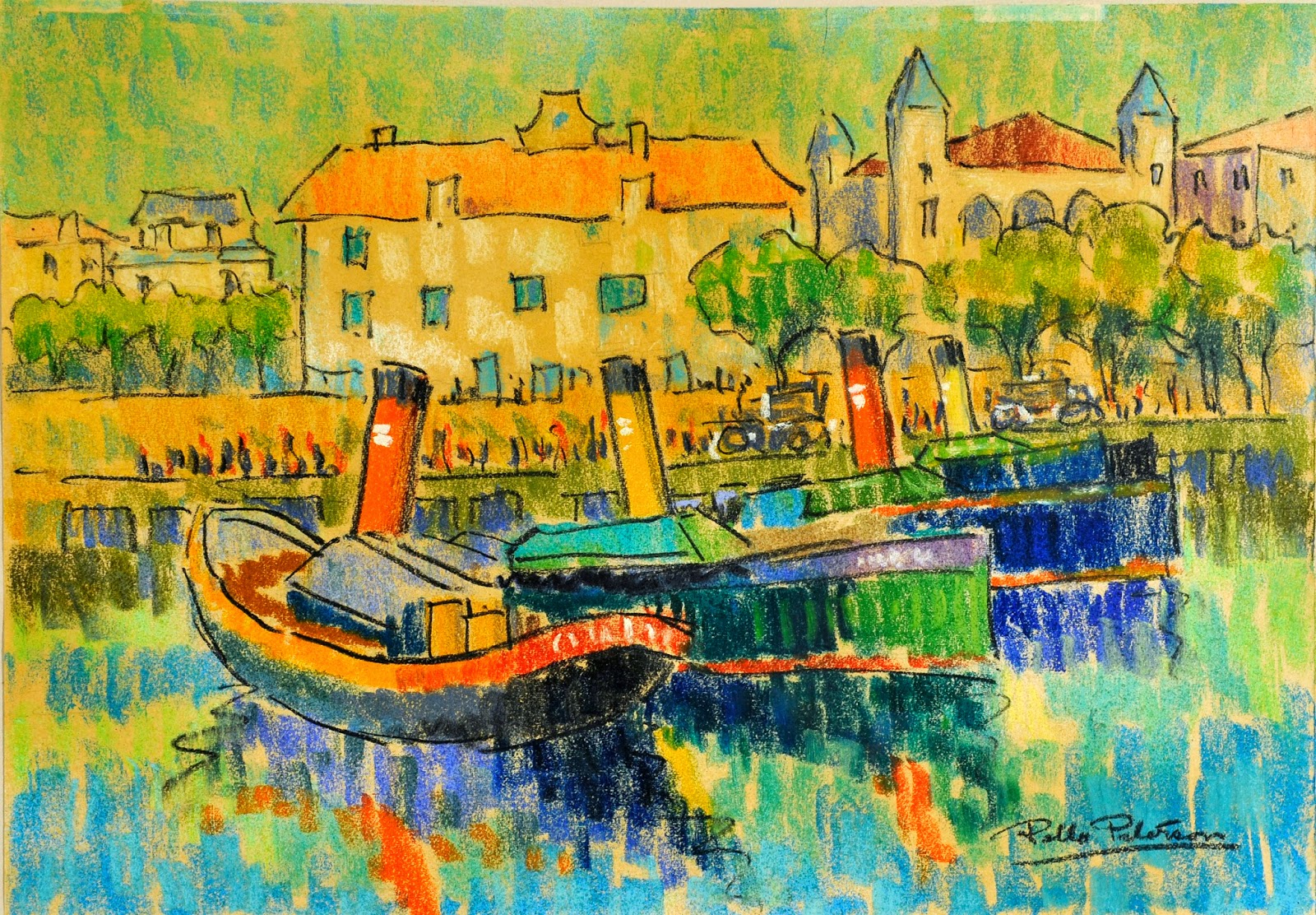Amigos de Rollo Paterson
lunes, 26 de enero de 2015
sábado, 24 de enero de 2015
domingo, 28 de diciembre de 2014
Boats in the port at St Jean de Luz by Rollo Paterson (1892 - 1978), pastel painting
Boats in the port at St Jean de Luz by Rollo Paterson (1892 - 1978), pastel painting.
Saint-Jean-de-Luz bay is situated to the east of the Bay of Biscay. It is the only sheltered bay between Arcachon and Spain. Thanks to its strong sea walls or dykes that protect the town from the full savagery of the Atlantic ocean, it has become a favourite for bathers across the Basque Coast. The seaside resort itself is relatively recent, however the port is old.
St Jean de Luz in Aquitaine is a beautiful coastal town with some great beaches, close to the Spanish border in what is known as the French Basque Country.
A pretty town with a distinct Basque identity, St Jean de Luz has a wonderful beach right in the centre of town. The Grande Plage of St Jean de Luz is sheltered by 3 impressive sea walls making it a safe beach for children who will love running about on the fine sand.
miércoles, 19 de noviembre de 2014
"The Pont d'Avignon and the Palace of the Popes" by Rollo Paterson (1892 - 1978)
1927, Avignon, Provence-Alpes-Côte d'Azur, France.
Oil on cardboard, 56 x 44 cms.
Private collection, Malaga, Spain.
Rollo Paterson travelled to Europe where from 1919-1939 he painted a series of, atmospheric plein air landscapes. He travelled through France and Italy and he meets a variety of painters, of French art. Travelling through the Côte Bleu, Les Alpes Maritime, and Brittany, he notes the great caravans at the fairs, and decides to build himself a caravan he can tow with his car to the places he wants to paint, and in search of new landscapes that serve to him as subject for his paint. It is also ideal to be able to take his own work with him. In 1925 he builds his first caravan, and visits places like Paris, Avignon, Lyon, Aix-le-Bains, Chamonix, Menton, Nice, St. Raphael, St. Tropez, etc... etc...
In 1927 Paterson depicted the Pont d'Avignon many times, he made many drawings and paintings of this bridge, Paterson depicted the structure from different sides but this angle he thought it was the best.
The Pont Saint-Bénézet, also known as the Pont d'Avignon, is a famous medieval bridge in the town of Avignon, in southern France. A bridge spanning the Rhone between Villeneuve-lès-
Avignon and Avignon was built between 1177 and 1185. This early bridge was destroyed forty years later during the Albigensian Crusade when Louis VIII of France laid siege to Avignon. The bridge was rebuilt with 22 stone arches. It was very costly to maintain as the arches tended to collapse
when the Rhone flooded. Eventually in the middle of the 17th century the bridge was abandoned. The four surviving arches on the bank of the Rhone are believed to have been built in around 1345 by Pope Clement VI during the Avignon Papacy. The Chapel of Saint Nicholas sits on the second pier of the bridge. It was constructed in the second half of 12th century but has since been substantially
altered. The western terminal, the Tour Philippe-le-Bel, is also preserved. The bridge was the inspiration for the song Sur le pont d'Avignon and is considered a landmark of the city. In 1995,
the surviving arches of the bridge, together with the Palais des Papes and Cathédrale Notre-Dame des Doms were classified as a World Heritage Site.
viernes, 5 de septiembre de 2014
'Bateau-lavoir sur la Seine, près de Paris' by Rollo Paterson (1892 - 1978).
'Bateau-lavoir sur la Seine, près de Paris' by Rollo Paterson (1892 - 1978).
This Washing-boat, on the nearby Seine River at Paris, was painted by the british artist Rollo Paterson (1892 - 1978). A landscape painted in watercolours that belongs to the artist's French period.
A very wellknown picture is 'Bateau-lavoir sur la Seine, près de Paris' an oil on canvas by Pierre-Auguste Renoir (1841 - 1919).
There are many paintings of bâteaux-lavoirs. Pictures such as, 'Lagny, le pont et les bâteaux-lavoirs sur La Marne' by Henri Lebasque, 1905, and 'Le bâteau-lavoir, Asnières', by Paul Signac, 1886. There were bâteaux-lavoirs on rivers throughout France and both washing-boats and huge quantites of drying laundry would have characterised every river. Thinking about the quais of Paris, for example, laundry was a part of the city's life which really has been forgotten, there were dozens of bâteaux-lavoirs and laundry structures crowded along the banks of the Seine. The bâteau-lavoir was popular with laundresses, the grandest had names like 'Parisian Wash-house', the Lavoir Parisien avec bains chauds, with the luxury of hot water sold at depths of 15 or 30 cm. Bâteaux-lavoirs could take advantage a river current, providing deeper, or sometimes faster flowing water which would have been appreciated for a good rinse. Many were heated, and sometimes proprietors offered large covered well-ventilated single or double storey drying decks too. A laundress paid for a place, and worked in her own way.
There is a very descriptive photograph of a simple washing-boat on the Saône in Mâcon. Doing the laundry was incredibly hard work, but this boat has a stove, shelter, and practical workspace. There was no need for the customary wooden box with straw, le carrosse, for kneeling protection as used at simpler lavoirs, or the freezing bare feet of the riverbanks and beaches. It's obviously a noisy, busy, female meeting place, with as much character and life as the bars used by their menfolk, maybe more. Some of the women are posing with their mugs of refreshment, bouillon or fortification, and enjoying the photographer's attention.
Suscribirse a:
Comentarios (Atom)



